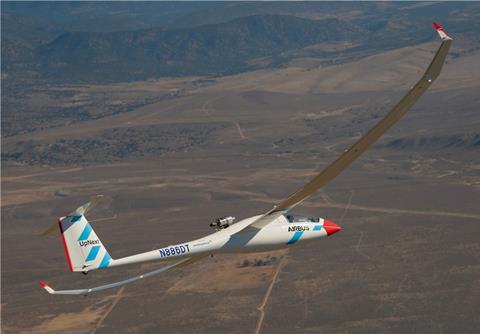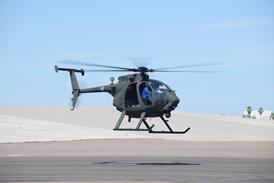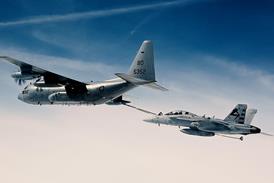Airbus’ innovation arm UpNext has conducted an 100% hydrogen-powered flight of a modified glider it is using to study contrails produced by hydrogen propulsion systems.
Airbus said on 16 November that the flight – completed 8 November in Nevada with a modified Arcus-J glider – was the company’s first-ever to use hydrogen as its sole fuel source, and kicks off a flight-test campaign that will culminate with a contrail-studying mission early next year. The project is called Blue Condor.
Two more flights using the glider have since taken place, with one involving an engine start at 10,000ft.

”Hydrogen offers aviation a path to low-carbon operations, yet its combustion produces contrails just like conventional jet fuel,” Airbus says. ”Hydrogen contrails, however, differ significantly. They don’t contain soot or sulphur oxides, but do hold nitrous oxides and a lot of water vapour – up to 2.5 times more than kerosene contrails.”
Both nitrous oxide and vapour are considered ”climate-impacting emissions, and as such the aviation industry has a duty to address them”, the company says.
The Blue Condor programme will take a small hydrogen-combustion engine as high as 30,000ft to compare its emissions with those of a similar-sized engine burning conventional jet fuel in a second aircraft flying alongside it.
Both gliders are operated by Project Perlan, an atmospheric research organisation that flies gliders at high altitudes. The aircraft’s hydrogen engine was assembled by Gemany’s Aero Design Works.
Contrail research will occur during Nevada’s cold-weather window early in 2024, Airbus says. The glider will be towed to test altitude by a Grob Egrett surveillance aircraft, which will follow behind and use sensors to collect atmospheric data.
”The flight promises to be a big step in furthering understanding of hydrogen’s climate impact,” the company says. ”Airbus is committed to studying the composition of these little-understood hydrogen contrails.”


























